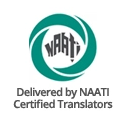
From Ancient Empires to Modern Times
The Persian language, also known as Farsi by its native speakers has roots that lie in the Indo-European language family, specifically the Iranian branch. Its earliest ancestor, Old Persian, emerged around 525 BCE and served as the administrative language of the mighty Achaemenid Empire. Inscriptions carved in cuneiform script, like those found at Bisotun, Iran, stand as testaments to this ancient form.
Middle Persian, a descendant of Old Persian, flourished during the Sasanian Empire (224–651 CE). Aramaic script was adopted for writing, and the language absorbed influences from neighboring cultures like Syriac and Arabic. It served as a vehicle for religious texts like the Zoroastrian Avesta.
Modern Persian emerged around the 9th century CE, heavily influenced by Arabic vocabulary and script. This period witnessed a flourishing of literature, with iconic poets like Ferdowsi and Rumi captivating audiences with their works.
Sound and Structure
The Persian language features a unique soundscape, featuring consonants and vowels not found in English. One such example is the voiceless velar fricative (خ – “kh”), a guttural “ch” sound produced by pushing air through the back of the throat without vibration.
Beyond individual sounds, Persian offers a captivating rhythm thanks to two key features: syllable weight and vowel harmony. The former refers to the length of time it takes to pronounce a syllable. Persian utilizes both long and short vowels, creating a natural rhythm as words flow together.
Vowel harmony, on the other hand, dictates that vowels within a word tend to belong to the same class (front or back of the mouth). This principle creates a pleasing sonic consistency throughout sentences, making Persian a language enjoyable to listen to.
A Streamlined Grammar
Modern Persian grammar has undergone a fascinating simplification process compared to its ancient forms. However, the language retains intricacies that add depth and nuance to expression. One such complexity is verb conjugation. Unlike English, where auxiliary words like “has” or “had” indicate verb tenses, Persian verbs undergo morphological changes. These changes reflect the speaker (I, you, he/she/it, etc.), the number of people involved (singular, plural), the time of action (past, present, future), and even the mood (indicative, imperative, subjunctive). This intricate system allows for precise expression without the need for additional words.
Persian grammar also employs prefixes and suffixes. These small word attachments can significantly alter the meaning of a base word. For instance, the prefix “bi-” often negates verbs. Adding “bi-” to “didan” – “to see” transforms it into “nadidan” – “not to see.” Similarly, the suffix “-gar” denotes the agent or doer of an action. So “kār” – “work” becomes kārgār – “worker” with the addition of “-gar.”
A Global Language
Millions speak Persian around the world, making it a global language. It is the official language of Iran. Neighboring Afghanistan also embraces Persian’s Dari dialect as an official language, spoken by millions. Tajikistan follows suit, with millions using Tajiki, a local Persian variant, as their official language. Persian’s influence extends beyond these official capacities, finding communities of speakers across Central Asia, the Caucasus, and parts of South Asia.
Bridge the Language Gap
At TranslateSwift, we understand the power of language to connect cultures. Our team of expert Persian translators is here to bridge the gap, ensuring accurate and culturally sensitive translations for your business, study or personal needs.
Other Languages
- English
- Spanish
- German
- Dutch
- French
- Italian
- Afrikaans
- Albanian
- Amharic
- Arabic
- Armenian
- Azerbaijani
- Basque
- Belarusian
- Bengali
- Bosnian
- Bulgarian
- Cantonese
- Catalan
- Cebuano
- Chichewa
- Chinese - Simplified
- Chinese - Cantonese
- Chinese - Traditional
- Chinese - Mandarin
- Corsican
- Croatian
- Creole
- Czech
- Danish
- Dari
- Esperanto
- Estonian
- Farsi
- Filipino
- Finnish
- Frisian
- Galician
- Georgian
- Greek
- Gujarati
- Haitian Creole
- Hausa
- Hawaiian
- Hebrew
- Hindi
- Hmong
- Hungarian
- Icelandic
- Igbo
- Indonesian
- Irish
- Japanese
- Javanese
- Kannada
- Kazakh
- Khmer
- Korean
- Kurdish
- Kyrgyz
- Lao
- Latin
- Latvian
- Lithuanian
- Luxembourgish
- Macedonian
- Malagasy
- Malay
- Malayalam
- Maltese
- Maori
- Marathi
- Mongolian
- Montenegrin
- Myanmar
- Nepali
- Norwegian
- Odia
- Pashto
- Persian
- Polish
- Portuguese
- Punjabi
- Romanian
- Russian
- Samoan
- Scots Gaelic
- Serbian
- Sesotho
- Shona
- Sindhi
- Sinhala
- Slovak
- Slovenian
- Somali
- Sundanese
- Swahili
- Swedish
- Tajik
- Tagalog
- Tamil
- Telugu
- Thai
- Turkish
- Ukrainian
- Urdu
- Uyghur
- Uzbek
- Vietnamese
- Welsh
- Xhosa
- Yiddish
- Yoruba
- Zulu
